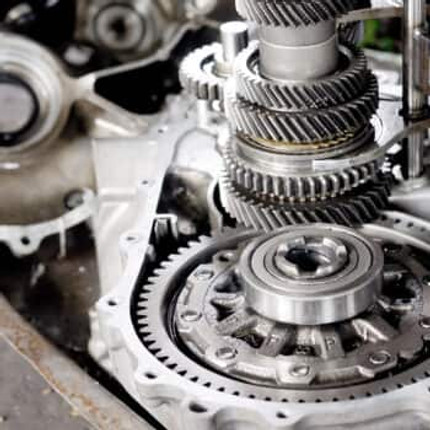The ABCs of a 4 Speed Automatic Transmission
Automatic transmissions are mechanisms designed to shift the gears of vehicles with the increase or sudden decrease of speed. Since the mechanism is automatic, the driver's input to change the gears manually – as it is done with manual transmission – is not required. An automatic transmission readily adjusts the rotational speed of the internal combustion engine. This occurs so that the gears can handle different speed ranges and torque outputs. This article covers a particular type of transmission, the 4-speed automatic transmission, and everything you need to know about it. But before then, let's highlight why vehicles use transmissions.
Why Do Vehicles Need a Transmission?
The engine of a vehicle is designed to generate torque. Therefore, in order to move the vehicle from its parking spot and into motion, there must be a transfer of the engine's rotational power to the wheels. This is what the drivetrain, i.e., the wheelwork consisting of an intricately connected set of rotating gears via which force is transmitted of which the transmission is part of, accomplishes. Transferring power from the crankshaft to the wheels is impossible without the drivetrain. The crankshaft only spins at 800 revolutions per minute. Connecting a driveshaft directly to the crankshaft will snap it into pieces within seconds. This is how vital the drivetrain system is. However, a vehicle engine can only spin at a specific number of speeds in order to perform optimally.
If the engine's spin is too low, the vehicle won't budge an inch from its parking spot. If the spin is too fast, the engine automatically self-destructs. What is required is a way to automatically multiply the power the engine produces when required – i.e., traveling up a hill, starting from a parked position, etc. – while decreasing the amount of power transmitted from the engine when it is not required, i.e., traveling very fast, going downhill, etc. This is where the transmission comes in.
Transmission’s Primary Goal
The primary goal is to ensure that the engine spins at an optimal rate, i.e., not too fast or too slow, while providing the wheels with an appropriate amount of power required to move or stop the vehicle simultaneously, irrespective of the situation you find yourself in. The transmission can be locked between the engine and the rest of the drivetrain. It acts like a power switchboard of sorts for your vehicle. The drivetrain is an entire assembly that covers the transmission, engine, differential, driveshaft, and axles. This system drives your vehicle forward or sets it in motion.
Two major types of transmissions exist:
Manual transmissions require the driver's input, i.e., you control the gears to be engaged by pressing a clutch pedal and shifting the necessary gear into place. On the other hand, an automatic transmission is a brilliant piece of engineering that determines the particular gear to be engaged without human input. All you need to do is step on the brake or gas pedals as desired. This is nothing short of automotive magic.
Another but less common transmission type is the electronically controlled transmission, which you will find on a few newer vehicles. These transmissions use hydraulics to actuate the bands and clutches. But an electric solenoid controls each hydraulic circuit. Different versions of automatic transmissions exist, but today, the 4-speed automatic transmission will be discussed.
What is a 4 Speed Automatic Transmission?
A 4-speed automatic transmission is the gear system that allows your vehicle to run at specific revolutions per minute (RPM) – usually 1,000 RPM – at four different speeds. For instance, a 4-speed automatic transmission at 1,000 RPM will allow your vehicle to run at 10, 20, 45, and 60 kilometers per hour. A vehicle with 5-speed automatic transmission can be driven at 5 different speeds at 1,000 revolutions per minute.
Bear in mind that the acceleration of a vehicle with a 4-speed automatic transmission will be slower than a vehicle with a 5-speed automatic transmission. This is because it will need to cover more speed – in kilometers per hour or miles per hour – before shifting to the next gear. Most vehicles with 4-speed automatic transmissions were manufactured during the 1990s. But most new model automobiles today come with 5-speed or even 6-speed automatic transmissions. Some excellent examples of vehicles with a 4-speed automatic transmission include:
- Mazda Demio
- Dodge Avenger SE
- Subaru Forester
- Scion xB, etc.
The popular Toyota models with 4-speed automatic transmissions are Tacoma, Corolla, and Yaris.
Which is Better – a 4-Speed Automatic Transmission or a 5-Speed Automatic Transmission?
No one can accurately say one is much better than the other, though the vehicle's model, brand, and year of production can play critical roles in this determination. Besides these factors, it doesn't make much of a difference, except that the 5-speed automatic transmission has several benefits you should be aware of, such as:
- It offers better fuel economy due to its narrower speed range
- It will give you more shifting clutches and actuation overhead energy than its counterpart. But this can eventually impact fuel economy negatively in the long run.
- Enhanced drivability
- You will experience less speed change than a 4-speed automatic transmission. This makes the shift feel much better to handle while in motion.
Regarding fuel efficiency and performance, the two versions of the automatic transmission are similar. This is why many auto experts recommend opting for a 4-speed automatic transmission, especially if the automobile is available at a pocket-friendly price.
More gears will only do a little good, except helping your automobile run its engine at the maximum revolutions per minute range for extended periods. Undoubtedly, every vehicle powered by a 4-speed automatic transmission will be a bit behind one with a 5-speed automatic. However, vehicles with 5-speed automatic transmissions will call for maintenance sessions – to allow the driver to shift more – which will set you back a few bucks from time to time.
Conclusion
The transmission is a vital part of any vehicle and must never be taken for granted. Without it, your vehicle will not budge from the garage or wherever you park it. Different versions of automatic transmissions exist, and one of the early versions is the 4-speed automatic transmission. The 4-speed transmission was manufactured and used in vehicles produced in the '90s. As a result, they're the preferred choice over their more modern counterparts for those with tight budgets and fewer maintenance requirements.



